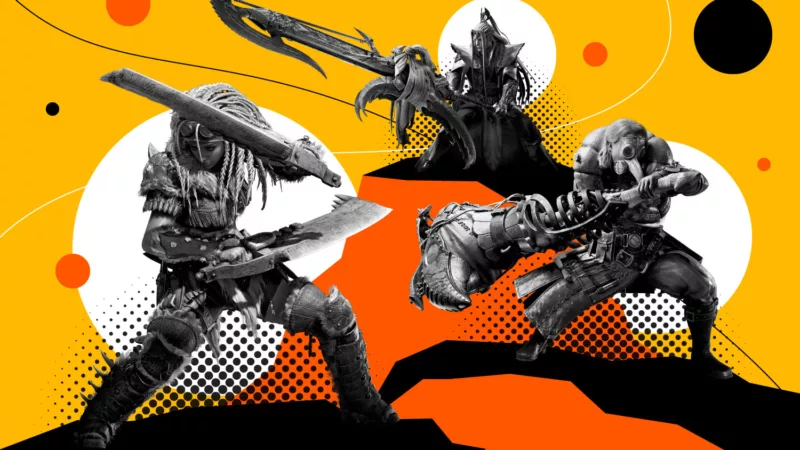
Riot is one of those game developers that don’t release a lot of games on the regular. But gamers around the world know that when Riot releases a new title, something built with Unreal Engine 4, it’s something to pay attention to.
As anticipated, Valorant’s release gave way to a new global eSports phenomenon that gathers everyone from casual gamers to professional streamers who live for the competition. But with the competition comes a ranking system that turns this first-person shooter (FPS) into a challenging climb. In order to move up the ladder, Valorant players need to understand what each rank means and what the barrier for entry is like.
Here, we’ll dive into the specifics, how the system works, and how you can rise to the top of the Valorant ranks.
What Are Valorant Ranks?
Ranks are a way to determine a player’s overall skill compared to other players based on a modified Elo system. If you’re unfamiliar with Elo, it’s the system that’s used in chess to rank different players, but with a few changes that allow for team-based combat. Valorant’s ranking system takes into account individual performance, team performance, milestones, KDA (kills, deaths, and assists), and of course, your win/loss ratio.
The ranks range from Iron I (the lowest rank in Valorant) to Radiant, which is extremely difficult and competitive to reach. Each rank has three tiers, and players have to actively compete to progress from one tier to another and then from one rank to the next.
For example, if you’re ranked Iron I, you’ll need to climb your way (through wins and awesome gameplay) to Iron II, and then Iron III. You can’t skip entire tiers or entire ranks, but depending on how well you play, it can be a fast climb.

Valorant Rank Distribution in 2025
Ever wonder how you stack up against other players? We tracked down the current Valorant rank distribution so you can see where you fall.
- Iron: 6.8%
- Bronze: 16.9%
- Silver: 21.6%
- Gold: 22%
- Platinum: 16.1%
- Diamond: 10.3%
- Ascendant: 5%
- Immortal: 0.88%
- Radiant: 0.02%

All Valorant Ranks Explained
Competitive games, especially ones made by Riot Games, can place a lot of pressure on new players. No one wants to play in Iron I the entire time, and the progression itself is a very rewarding experience.
But what does each rank mean?
A low rank means you have some game basics to master and individual agent mechanics to get used to. Once you find your mains (mainly played characters), you’ll begin to get a feel for how to best use them.
The highest Valorant rank is a clear indicator that you’ve mastered the game, its maps, and its mechanics, and managed to claw your way to the top of the Valorant talent pool. With only 0.02% of players currently ranking Radiant, reaching the top is the equivalent of becoming a professional Valorant player.
How the Valorant Ranking System Works
The ranking system in Valorant is designed to create a fair and competitive environment by pairing players with similar skill levels. The game enables cross-platform gameplay, so the player pool is bigger than you might imagine. Let’s break down how the system works, the factors that influence your rank, and what happens when a new Act begins.
For context, Acts and Episodes are the way content updates are organized. Games usually opt for the “season” system, but Riot took a storytelling approach with Valorant. Each Episode is made up of three Acts, serving as smaller seasons within the Episode. New Episodes typically introduce major updates like new agents, maps, or mechanics, while Acts often focus on smaller updates or additions.
Valorant uses two primary metrics to determine your rank:
- Rank rating (RR): This is a visible metric that shows your progress within your current rank. You earn RR points by winning matches and lose them when you’re defeated. Gaining 100 RR will promote you to the next rank, while dropping below zero can demote you. For example, if you’re currently ranked Silver I and you win enough games to get 100 RR points, you’ll move up to Silver II.
- Matchmaking rating (MMR): This is a hidden metric that works behind the scenes to measure your skill level. MMR influences the types of opponents you face and determines how much RR you gain or lose after a match. If your MMR is higher than your current rank, you’ll gain more RR for a win and lose less for a loss, making it easier to climb. Conversely, if your MMR is lower, climbing becomes more challenging.
This makes the system straightforward and fair to everyone involved. Of course, matchmaking will vary as your skill rating changes, and you’ll face tougher opponents as you climb. But winning or losing isn’t the only factor that goes into your rank. Consider these factors while playing:
- Wins vs. losses: Valorant emphasizes teamwork, so individual performance alone can’t outweigh the importance of securing a victory as a team.
- Performance: While winning is the primary factor behind rank changes, individual performance can still influence how much RR you gain or lose. Exceptional play — like securing key kills or clutching rounds — can slightly boost your RR gain in lower ranks. When it comes to higher ranks (Diamond and above), performance becomes less relevant and wins matter most.
- Match difficulty: If you’re matched against a stronger team (based on MMR) and win, you’ll gain more RR points than usual. Losing against a much weaker team can result in a harsher RR penalty.
- Rank decay: Valorant doesn’t have traditional rank decay for inactivity, meaning you won’t lose your rank if you take a break from playing. But ranks are partially reset at the beginning of each new Act (competitive season). When that happens, players need to complete a placement match to recalibrate their rank. The system uses your previous MMR to determine where you’ll start.
Valorant Rank Placements and Party Restrictions
To enter competitive play, you need to first play your placement matches. Typically, players play five matches to establish their initial rank. If you’re a returning player, your previous MMR influences where you’ll start. For newcomers, your performance in placement matches is extremely important, as it sets your starting rank in Iron, Bronze, or Silver tiers.
And before you even think of calling that friend of yours who has a much higher rank than you, keep in mind that Valorant encourages balanced matchmaking, even in party queues, by limiting the rank difference allowed between players. For example:
- Players in Iron through Ascendant can queue with teammates within a certain rank range (usually within two ranks or tiers).
- Players cannot matchmake in ranked gameplay with a group of four in the spirit of fairness.
- Groups of two or three are limited by the rank disparity requirements.
- At higher levels (Immortal and Radiant), stricter restrictions apply to preserve competitive integrity.
Tips for Climbing Valorant Ranks
Improving your rank requires dedication and a focus on core skills. It may seem like a lot for a video game, but mastering Valorant means paying attention to positioning, aim, communication, and objectives. Here are some essential strategies to help you rise through the ranks:
- Improve aim and crosshair placement: Good aim is the cornerstone of Valorant success. Focus on consistent crosshair placement at head level to minimize reaction time when engaging enemies. Practice in aim trainers or the Valorant shooting range to refine your flicks and tracking.
- Ensure effective communication and teamwork: Call out enemy locations, relay critical information, and coordinate strategies with your team. Even simple pings or text updates can make a big difference. Positive communication also boosts team morale and keeps everyone focused.
- Master abilities and agent selection: Understanding your agent’s abilities and how they synergize with the team is vital. Choose agents that complement your playstyle and team composition. Additionally, learning a few agents across different roles (e.g., Duelist, Controller) ensures you can adapt to various situations.
Like in other team games, you’ll want to avoid over-aggression, neglecting utility usage, and failing to adapt to opponents’ strategies. Many players lose ranks due to tunnel vision, so stay aware of your surroundings and adjust tactics when needed.
It’s very important not to overextend or move in a manner that’s inconsistent with the rest of your team. Positioning yourself accurately allows you to make the most of your abilities.
Dive Into Valorant and More Competitive Games
Valorant offers a free-to-play and rewarding competitive experience for players of all skill levels. Climbing the ranks is a testament to your growth as a player and team member. But Valorant isn’t the only game to offer a delightfully frustrating experience of climbing toward glory.
Explore engaging and competitive FPS and MMOFPS games that challenge you beyond stories and bot-shooting, like League of Legends (another Riot game) and Overwatch 2. Test your mettle against other players for the ultimate rank bragging rights.
FAQ
Curious about the nuances of Valorant’s ranking system? Here are answers to some frequently asked questions to guide you.
What’s the Difference Between Rank and Act Rank?
Your rank reflects your current competitive standing, while your Act Rank serves as a record of your performance during an Act. Act Rank is displayed in your career history and shows your highest rank achieved.
Can I Drop Down to a Lower Rank or Tier If I Lose Too Many Matches?
Yes, it’s possible to drop to a lower rank or tier if your RR falls below zero. However, the system gives you a buffer before demotion, so you’ll need to consistently lose matches to move down.
How Does Valorant’s Matchmaking Work in Ranked Mode?
Valorant’s matchmaking pairs players based on their MMR to ensure balanced games. Even if players have different visible ranks, the system ensures the average skill level of both teams is similar.
What Happens To My Rank at the End of an Act? Do I Need To Start Over?
At the end of an Act, your rank partially resets. You’ll need to complete a placement match to recalibrate your rank, though your hidden MMR largely determines where you start. It’s common to start slightly lower than your previous rank.










